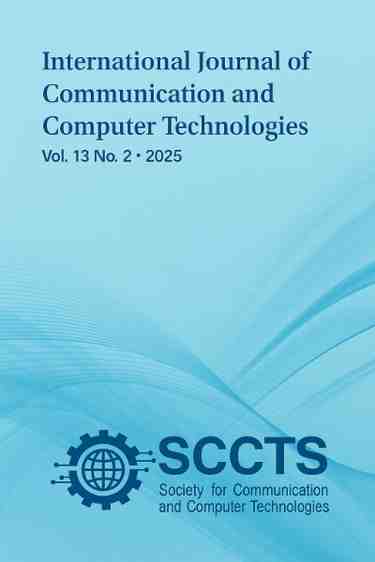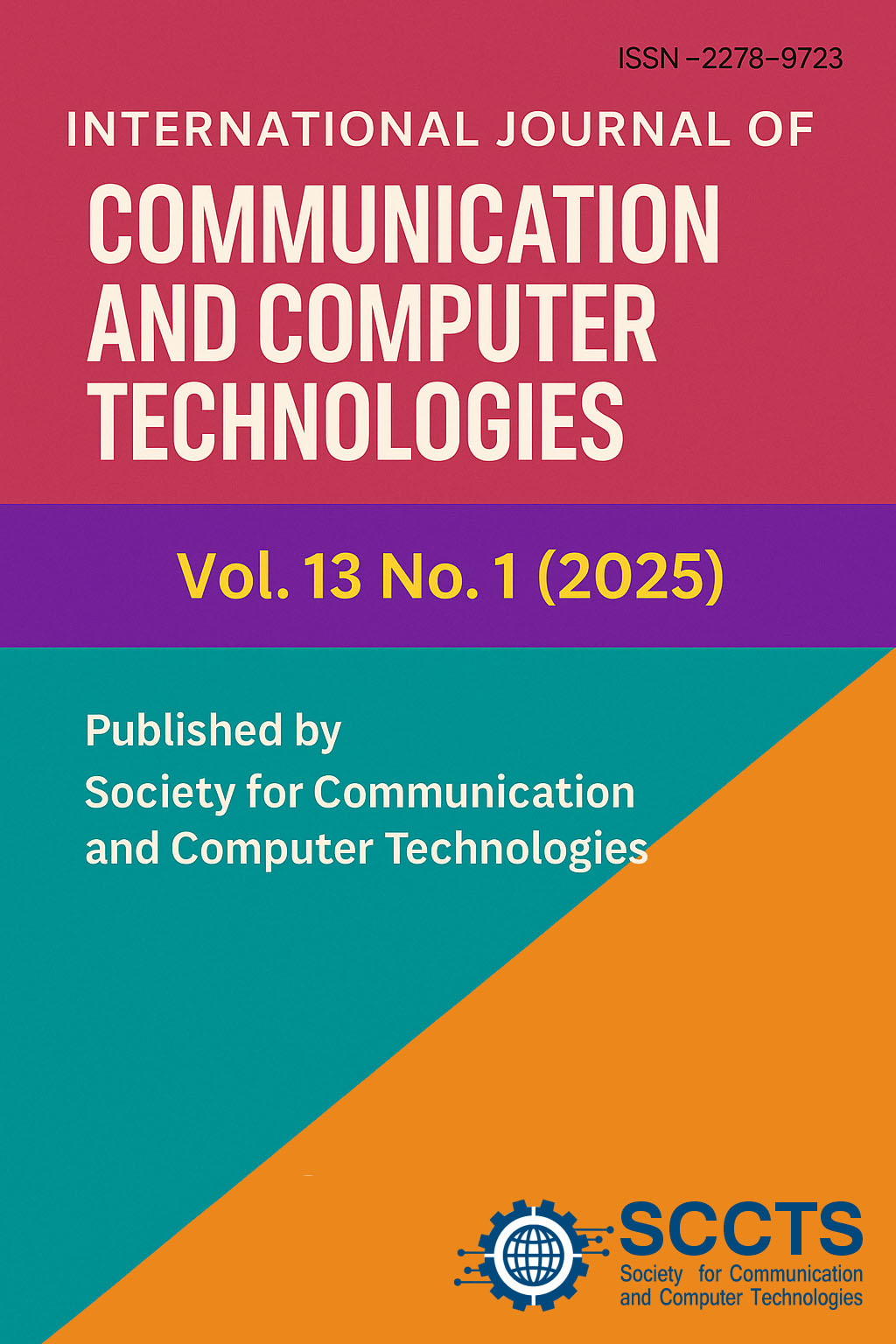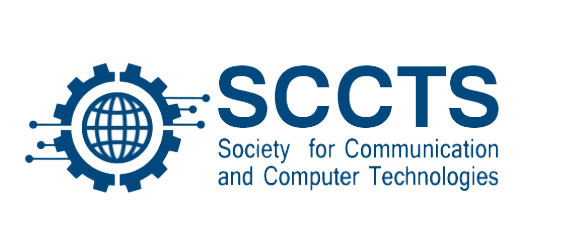Harnessing Quantum Computing and Generative AI for Next-Generation Credit Fraud Detection: Real-Time Anomaly Detection and Adversarial Risk Mitigation
DOI:
https://doi.org/10.31838/IJCCTS.13.02.01Keywords:
Synthetic Data, Quantum Computing, Generative AI, Anomaly DetectionAbstract
The increasing complexity of financial crimes has revealed severe weaknesses in the conventional credit fraud detection systems. With the future and development of the digital payment ecosystem expanding rapidly around the world, there is an immediate necessity of smart, adaptive, and dynamic solutions, able to intercept the growing trends of fraud. The paper will apply a hybrid model based on combining both Quantum Computing and Generative Artificial Intelligence (GenAI) to transform credit fraud detection. Quantum Computing opens up initial brand-new levels of computational power and parallel processing with an understanding of mass data analysis within transactions. Meanwhile, GenAI advances fraud detection because GenAI can produce fake cases of fraud, simulate human behaviours, and increase model resilience. The combination of these technologies provides the basis for proactive detection of anomalies and dynamic risk evaluation. It is based on a conceptual architecture, which fuses quantum-enhanced learning models with adversarially trained GenAI systems. The framework helps detect anomalies in real-time, adapt to learn a greater diversity of fraud patterns, and mitigate risks adversarial through a convenient methodology based on federated learning and model training secrets. This is a multidisciplinary approach that is natural to both traditional systems based upon rules and establishes the way to a scalable, smart, and regulations-adherent fraud detection infrastructure. Our results indicate a transformative possibility of the integration of emerging technologies to construct next-generation security systems that can predict and defend credit fraud at a greater pace and accuracy.
References
Patil, Dimple, Artificial Intelligence In Financial Services: Advancements In Fraud Detection, Risk Management, And Algorithmic Trading Optimization (November 20, 2024). http://dx.doi.org/10.2139/ssrn.5057412
Fatunmbi, T. O. (2024). Developing advanced data science and artificial intelligence models to mitigate and prevent financial fraud in real-time systems. https://doi.org/10.30574/wjaets.2024.11.1.0024
Huang, K., Wang, Y., Goertzel, B., Li, Y., Wright, S., & Ponnapalli, J. (2024). Generative AI Security. Future of Business and Finance. https://doi.org/10.1007/978-3-031-54252-7
Dritsas, E., & Trigka, M. (2025). Machine Learning in e-Commerce: Trends, Applications, and Future Challenges. IEEE Access. DOI: 10.1109/ACCESS.2025.3572865
Gadicha, A. B., Gadicha, V. B., & Maniyar, M. M. (2025). Adversarial AI in Cyber Security. In Deep Learning Innovations for Securing Critical Infrastructures (pp. 19-40). IGI Global Scientific Publishing. DOI: 10.4018/979-8-3373-0563-9.ch002
Fatunmbi, T. O. (2024). Advanced frameworks for fraud detection leveraging quantum machine learning and data science in fintech ecosystems. https://doi.org/10.30574/wjaets.2024.12.1.0057
Dritsas, E., & Trigka, M. (2025). Exploring the intersection of machine learning and big data: A survey. Machine Learning and Knowledge Extraction, 7(1), 13. https://doi.org/10.3390/make7010013
Singh, P., Raman, B. (2024). Recent Advances and Future Perspectives. In: Deep Learning Through the Prism of Tensors. Studies in Big Data, vol 162. Springer, Singapore. https://doi.org/10.1007/978-981-97-8019-8_11
Malempati, Murali, Generative AI-Driven Innovation in Digital Identity Verification: Leveraging Neural Networks for Next-Generation Financial Security (December 30, 2024). http://dx.doi.org/10.2139/ssrn.5204991
Parizad, A., Baghaee, H. R., Alizadeh, V., & Rahman, S. (2025). Emerging Technologies and Future Trends in Cyber‐Physical Power Systems: Toward a New Era of Innovations. Smart Cyber‐Physical Power Systems: Solutions from Emerging Technologies, 2, 525-565. https://doi.org/10.1002/9781394334599.ch19
Raju, Rajan, From Models to Markets: Generative AI and Its Emerging Role in Indian Financial Services (May 09, 2025). http://dx.doi.org/10.2139/ssrn.5223947
George, A. S. (2024). Finance 4.0: The transformation of financial services in the digital age. Partners Universal Innovative Research Publication, 2(3), 104-125. https://doi.org/10.5281/zenodo.11666694
Jeyachandran, Pradeep, Leveraging Machine Learning for Real-Time Fraud Detection in Digital Payments (November 06, 2024). http://dx.doi.org/10.2139/ssrn.5076783
Rawat, K.S., Yadav, M. Analyzing Quantum Computing Applications Across Key Scientific Domains Using Trends and Visual Analytics. Arch Computat Methods Eng (2025). https://doi.org/10.1007/s11831-025-10312-w
Olaoye, Godwin, Self-Learning Neural Networks in the Cloud: Towards Autonomous AI Systems (February 08, 2025). http://dx.doi.org/10.2139/ssrn.5129553
Rane, N. L., Paramesha, M., Choudhary, S. P., & Rane, J. (2024). Machine learning and deep learning for big data analytics: A review of methods and applications. Partners Universal International Innovation Journal, 2(3), 172-197. https://doi.org/10.5281/zenodo.12271006
Saxena, A., Verma, S., Mahajan, J. (2024). Evolution of Generative AI. In: Generative AI in Banking Financial Services and Insurance. Apress, Berkeley, CA. https://doi.org/10.1007/979-8-8688-0559-2_1
García-Pineda, V., Valencia-Arias, A., López Giraldo, F. E., & Zapata Ochoa, E. A. Integrating Artificial Intelligence and Quantum Computing: A Systematic Literature Review of Features and Applications. Available at SSRN 5227456. https://doi.org/10.1016/j.ijcce.2025.08.002
Sriram, Harish Kumar and Challa, Kishore and Kaulwar, pallav and Gadi, Anil Lokesh and Singreddy, Sneha, AI and Cloud-Driven Transformation in Finance, Insurance, and the Automotive Ecosystem: A Multi-Sectoral Framework for Credit Risk, Mobility Services, and Consumer Protection (March 15, 2025). http://dx.doi.org/10.2139/ssrn.5231461
Lakkshmanan, A., Amudhan, S., Gaikwad, S. M., & Tyagi, A. K. (2024). Further Research Opportunities and Challenges Towards AI-Driven Tools for Modern Generation. Impacts of Generative AI on Creativity in Higher Education, 69-100. DOI: 10.4018/979-8-3693-2418-9.ch004
M. Trigka and E. Dritsas, "The Evolution of Generative AI: Trends and Applications," in IEEE Access, vol. 13, pp. 98504-98529, 2025, doi: 10.1109/ACCESS.2025.3574660
J. Yu, A. V. Shvetsov and S. Hamood Alsamhi, "Leveraging Machine Learning for Cybersecurity Resilience in Industry 4.0: Challenges and Future Directions," in IEEE Access, vol. 12, pp. 159579-159596, 2024, doi: 10.1109/ACCESS.2024.3482987
Mara, G. C., Kumar, Y. R. ., K, V. R., S, M. ., & R, C. (2025). Advance AI and Machine Learning Approaches for Financial Market Prediction and Risk Management: A Comprehensive Review. Journal of Computer Science and Technology Studies, 7(4), 727-749. https://doi.org/10.32996/jcsts.2025.7.4.86
Ifedayo, A. E., Olugbade, D., & Hamid, S. (2025). Integrating Artificial Intelligence with Blockchain: A Literature Review on Opportunities, Challenges, and Applications. Blockchain, Artificial Intelligence, and Future Research, 1(1), 52–69. https://doi.org/10.70211/bafr.v1i1.179
Mahmudul Hasan, & Md. Omar Faruq. (2025). AI-AUGMENTED RISK DETECTION IN CYBERSECURITY COMPLIANCE: A GRC-BASED EVALUATION IN HEALTHCARE AND FINANCIAL SYSTEMS. ASRC Procedia: Global Perspectives in Science and Scholarship, 1(01), 313-342. https://doi.org/10.63125/49gs6175
Kandpal, V., Ozili, P. K., Jeyanthi, P. M., Ranjan, D., & Chandra, D. (2025). Creative Artificial Intelligence Supports to FinOps. In Digital Finance and Metaverse in Banking (pp. 87-113). Emerald Publishing Limited. https://doi.org/10.1108/978-1-83662-088-420251004
Somu, B. (2024). The Future of Banking IT Services: Convergence of Intelligent Infrastructure and Agentic AI Models. Global Research Development (GRD) ISSN: 2455-5703, 9(12). https://doi.org/10.70179/vhh0wn61
A. Andreas, C. X. Mavromoustakis, G. Mastorakis, A. Bourdena and E. Markakis, "Quantum Computing in Semantic Communications: Overcoming Optimization Challenges with High-Dimensional Hilbert Spaces," in IEEE Access, doi: 10.1109/ACCESS.2025.3603338
Downloads
Published
How to Cite
Issue
Section
License
Copyright (c) 2025 International Journal of communication and computer Technologies

This work is licensed under a Creative Commons Attribution-NonCommercial-ShareAlike 4.0 International License.









 The articles in Worldwide Medicine are open access articles licensed under the terms of the
The articles in Worldwide Medicine are open access articles licensed under the terms of the 